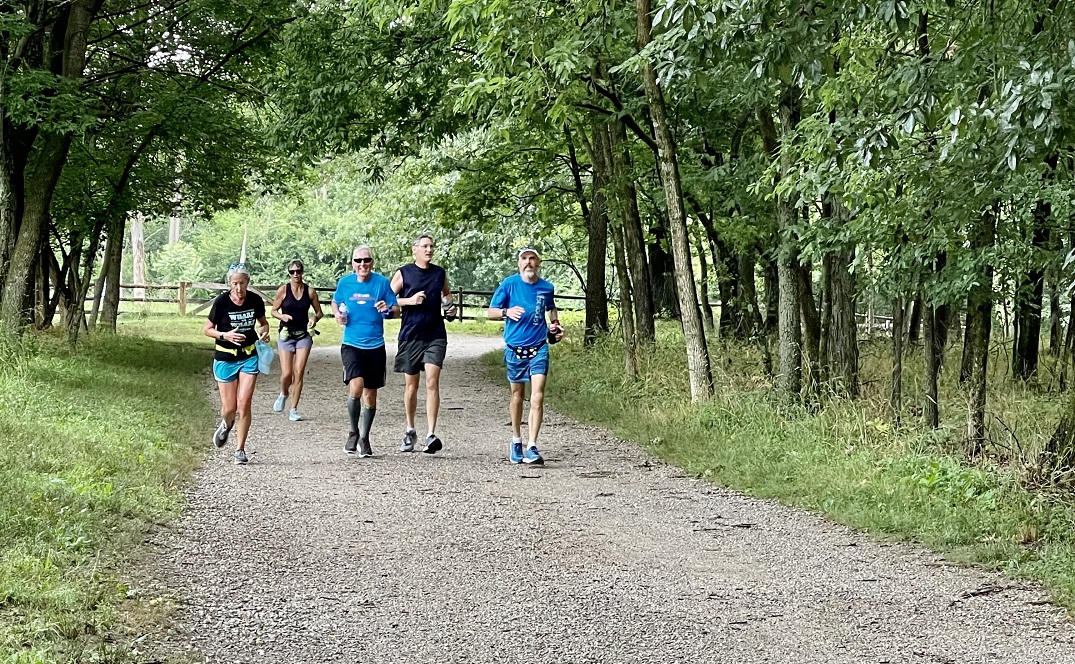You came, you saw, you conquered the 5K. You’re ready to take on the world, or at least the next big thing.
So, now what?
The next step for a runner who wants to go beyond a 5K involves many thousands of steps. Or, as Katie Helbig, Big River Running Company’s director of community programs, said, “one giant leap.”
Though the most popular longer distance is a half-marathon, the 10K can be a stepping stone — one that presents its own set of challenges.
“Going from a 5K to a half can be intimidating, but the 10K is a more attainable midway point,” said Helbig, who guides Big River’s free START 10K program. “We’re looking to remove all barriers for people to enjoy a healthy lifestyle and improve their health.”
On the one hand, the timing for joining Big River’s program couldn’t be worse. The group just finished its annual 10-week training by competing in the Great GO! St. Louis Halloween 10K. On the other hand, Helbig agreed to share advice with runners eager to make the transition to longer distances on their own.
So did Katie Evans, a board member at the St. Louis Track Club, who leads its half-marathon and marathon training groups. In addition to Evans’ sage advice, the Track Club offers suitable weekend training runs in the months ahead through its Frostbite Series.
We also sprinkled in some tips from a pair of the Founding Fathers of distance training, Hal Higdon and Jeff Galloway.
When to start: That depends on your fitness level. Big River’s program lasts 10 weeks, and Helbig recommends that participants be able to run/walk for 40 minutes when training begins. Evans says a training plan could range from four to eight weeks. Higdon’s novice 10K program includes an eight-week schedule and a short run of 2.5 miles. Galloway offers a 13-week schedule that includes a first run of 20 minutes.

St. Louis Track Club’s half marathon training group.
How often to run: Three or four days a week is the consensus, with the longest run scheduled for Saturday or Sunday. Big River’s group meets every Saturday and follows a day-by-day program for the rest of the week. “We recommend specific days, but like most training plans, these are suggestions,” Helbig said. “Life and bad weather can get in the way, so it’s OK to shift.”
Building up mileage: Since you’re doubling the distance, you’ll have to build stamina. “It can be as little as a 10-percent increase on your long run on the weekend, or it can be as much as adding in another day to your week,” Evans said. “It’s helpful to increase your daily mileage if you’re unable to add days to your running. If you can add days to your running schedule, one additional easy, short mileage run should be adequate.”
The “rest” of the week: Higdon recommends resting twice a week and cross-training twice a week. Galloway recommends one day of rest and walking or cross-training three times a week. He also encourages newbies to the 10K not to wait to take a walk break, arguing that walk breaks speed recovery without losing the endurance effect.
“Cross-training, such as cycling, swimming, yoga, Pilates or weight training should not leave you feeling sore or tired,” Evans said. “You want to work the muscles you don’t work while running. This gives your legs extra time to recover.”
Helbig emphasizes three non-running days with rest “as an injury-prevention tool. We don’t talk a lot about cross-training, but swimming or yoga could benefit running. If it’s an exercise that brings you joy, do it.” She also recommends strength training or foam rolling on rest days.
Going it alone: One of the biggest advantages to a program like Big River’s or the Track Club’s half-marathon training is the accountability and support. But don’t let the lack of a formal group stop you. Find an accountability partner or tell family, friends, and co-workers what you’re doing.
“Write it down and share it, so they can ask you about it from time to time,” Helbig said.
Toughest obstacles: The Katies agree that it’s patience, or the lack thereof. “Having the patience to slowly build up,” Helbig said. “Building up too quickly can cause or perpetuate an injury. Don’t jump into too many miles too quickly.”
Evans adds that easy runs should be at a pace that allows you to hold a conversation. “Don’t push the pace just because you can,” she said.
Despite colder months ahead, Evans reminds runners to hydrate even though you don’t feel as if you’re sweating. “That also means being patient while learning to hydrate for the longer distance,” she said. “You will need to practice it on your runs.”
Setting a goal: The experts agree that the ultimate goal when attempting a longer distance for the first time should be to finish. Instead of a time goal, Helbig recommends defining your purpose and motivation for tackling a longer distance. “Looking at the bigger picture gets you in the right mindset to enjoy the process,” she said.
Resources
In addition to its 10K program, Big River Running Company offers a free training program in the spring for the 5K and speedwork in the summer. For more information, visit bigriverrunning.com/run/start-5k/.
For more information on the St. Louis Track Club’s training group, see stlouistrackclub.com/sltc-training-group/. Its Frostbite Series begins in December and extends to February: stlouistrackclub.com/frostbite-series/.
Hal Higdon’s Novice 10K program: halhigdon.com/training-programs/10k-training/novice-10k/.
Jeff Galloway’s 10K for beginners: jeffgalloway.com/training/5k-10k-training/.
Author: Kathleen Nelson is a regular contributor to Terrain Magazine.
Featured Image: Big River Running Company’s START 10K runners on Grant’s Trail. (Kathleen Nelson)


Leave A Comment